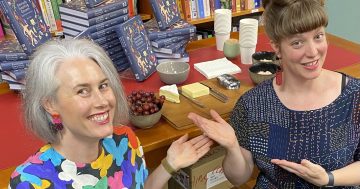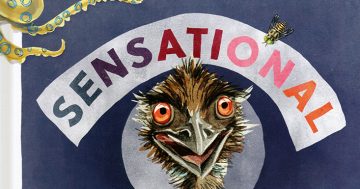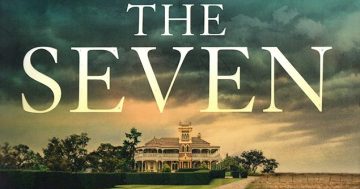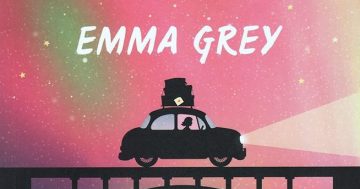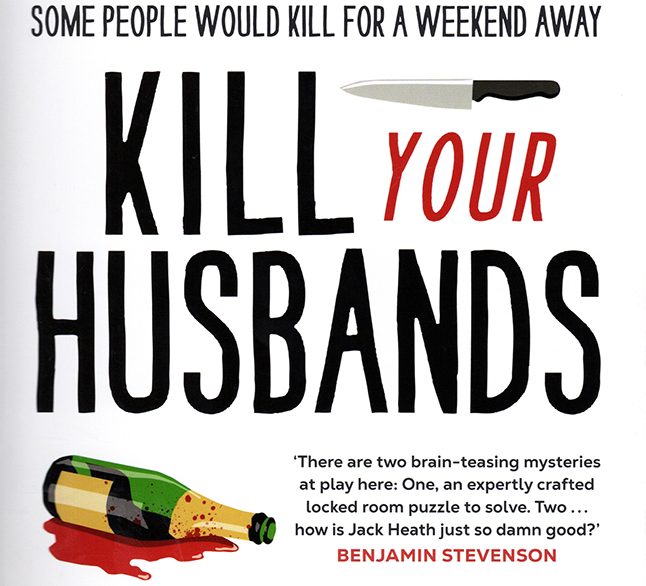
Jack Heath’s Kill Your Husbands is a cleverly constructed whodunnit. Photo: Supplied.
“Variety’s the very spice of life, That gives it all its flavour.” Poet William Cowper gave us these wise words in the 18th century and the January books bear them out. Here, we assuredly have diverse holiday reading.
Jack Heath’s latest crime thriller, Kill Your Husbands (Allen & Unwin), could easily have slipped sideways into romance fiction. All the elements are there – the intense attention on four partnered relationships, tensions and affairs, desire and power plays, veiled conversations and secrets, sex and intrigue.
A weekend house party for six high school chums soon goes awry as it appears deals about couple swapping have been made without everyone’s agreement. Murder and mayhem ensue, but not until the second half of the book.
Jack Heath cunningly keeps us on the hook for a good part of the story as we wonder exactly what has happened at the house, who everyone actually is (he toys with us over the name of the survivor, for example) and what their simmering issues are.
He cleverly uses the Christie-esque technique of introducing a large cast of characters in quite a lot of detail so that we theoretically have all we need to solve the crime. Lovers of the genre will know this isn’t strictly true, though, and there are plenty of surprises and smart twists till the very end.
This book is particularly interesting for its focus on aspects of parenthood and the pressures it can put on couples. That the story ends with romance is further evidence of Jack Heath’s masterly control of the audience – and perhaps his inherent romanticism.
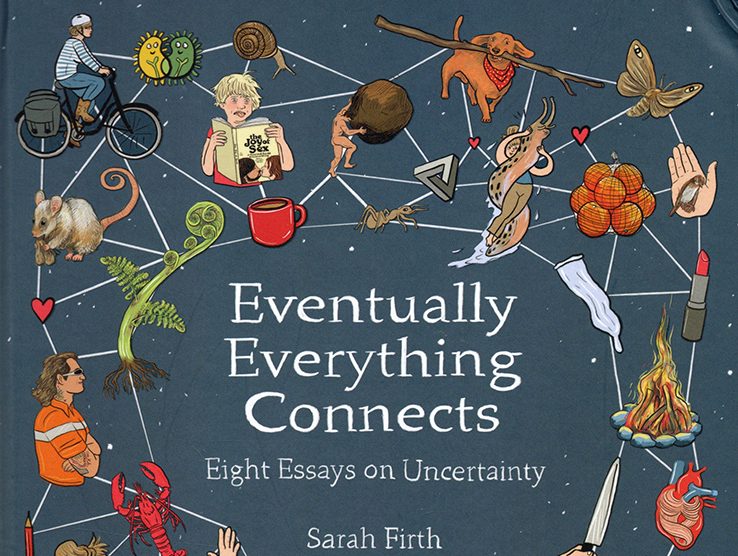
Sarah Firth’s Eventually Everything Connects is a series of gently linked essays in graphic format. Photo: Supplied.
Sarah Firth is a comic book artist, graphic novelist and describer/recorder. Eventually, Everything Connects (Joan, an imprint of Allen & Unwin) is her first graphic novel. It’s a collection of eight visual essays about things of universal interest and concern: joy, wanting, sex, home, the state of the world, perception, individuality and how we as individuals fit into a bigger picture.
While each essay can be consumed as a single read, a strand of connection takes us from the simple joys of being to the need for us to see the lives of others, indeed other non-human beings, when we make decisions.
To begin, Sarah refers to “a simple moment of pure love and joy, trust nurtured through routine over the years”. To finish, she reminds us, “It is through encounter that we come to know each other”.
The publication of this book by a mainstream Australian publishing house is significant. It is recognition of something teachers and parents have always known – that people learn, see things and process information and ideas differently.
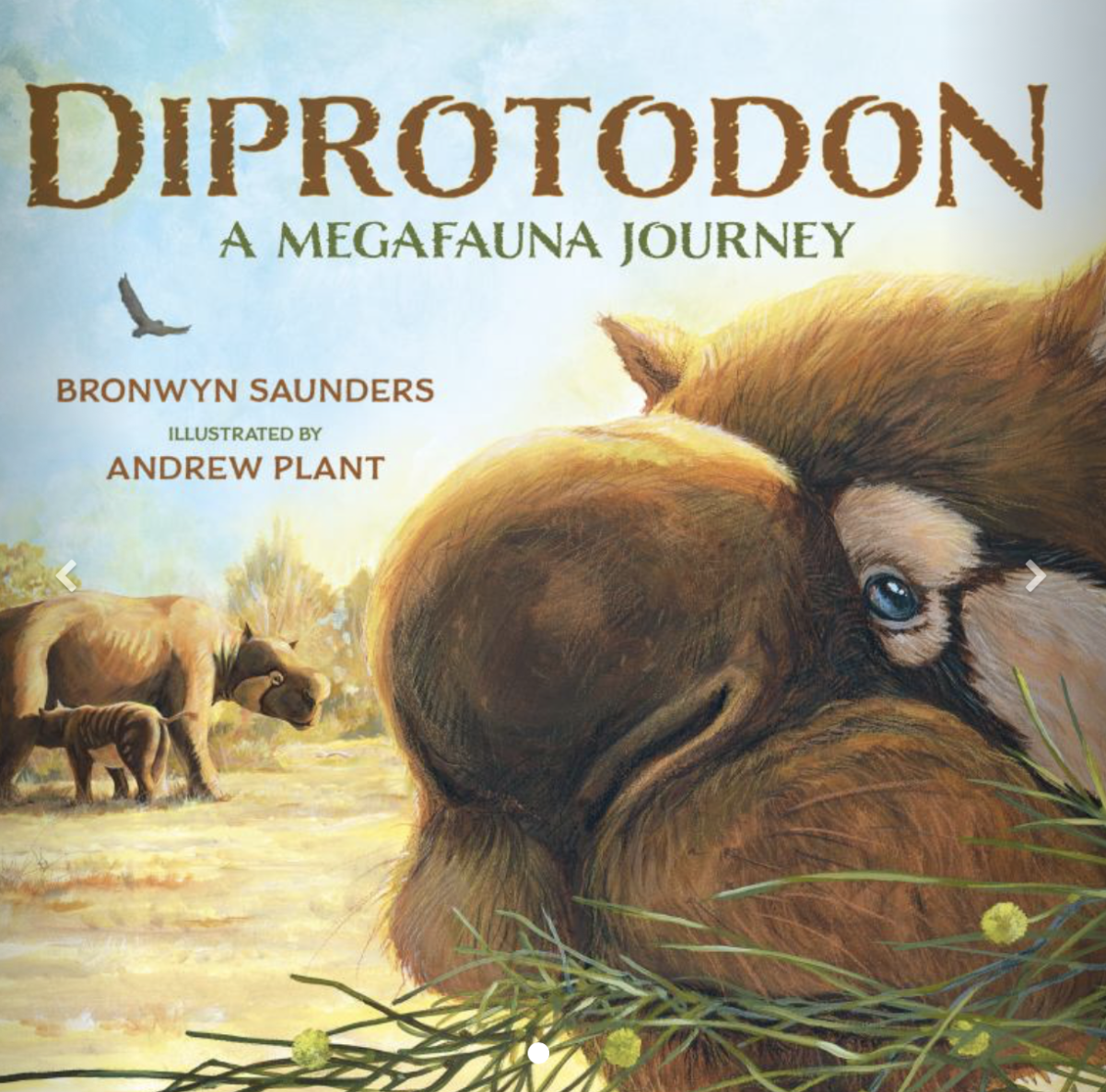
Diprotodon – A Megafauna Journey is a fictional story packed with facts. Photo: Supplied.
Bronwyn Saunders and Andrew Plant’s Diprotodon – A Megafauna Journey (CSIRO Publishing) will be welcomed by many school librarians.
While it is a fictional story about a particular diprotodon, its end pages are stacked with scientific facts. Professor Emeritus Rod Wells, a paleontologist and discoverer of the fossil deposits at Naracoorte caves that inspired this book, was the scientific adviser.
The author’s passion for her subject guided her narrative and her determination to make this information available to young readers in an accessible and interesting format. The author’s language is clear and simple.
Andrew Plant’s illustrations equally provide a clear concept of the sweeping environment of the Pleistocene epoch in which these huge mammals lived. In a palette mainly of yellows and ochres, his reconstruction from the source material of the Diprotodon and its world is remarkable.
For the many young readers who read nonfiction for pleasure, this book ticks that box while also helping children to understand and express emotion and values.
Free teachers’ notes are available as a PDF download.
Barbie Robinson is co-founder and a content creator for Living Arts Canberra, a not-for-profit media outfit supporting arts and community in the Canberra region and books worldwide through its website, podcast interviews and a 24/7 internet radio station.












